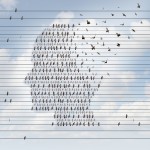The wife of the late Robin Williams recently sat down with Good Morning America to clarify that it was not depression that killed her husband, but instead, Lewy Body Dementia.
The events surrounding the death of this brilliant man are likely multifactorial, and to point at any one thing is likely an oversimplification of something far more complex. What his death is now doing, however, is bringing the discussion about dementia, a topic rife with confusion, to the fore. And that's a good thing.
WHAT IS DEMENTIA?
Dementia (now called neurocognitive disorder) is a progressive cognitive decline that involves learning and memory, language, executive function, complex attention, perceptual-motor and social cognition. These deficits will interfere with an individual s ability to carry on the activities of daily life and maintaining independence.
Most often, dementia is not often picked up by the patient or practitioner, rather a spouse or someone else who knows the patient. The onset can be insidious. Patients will have trouble with the following:
- Retaining new information (i.e. trouble remembering events)
- Handling complex tasks (i.e. balancing a checkbook)
- Reasoning (i.e. coping with unexpected events)
- Spatial ability and orientation (i.e. getting lost in familiar places)
- Language (i.e. word finding)
- Behavior
DEMENTIA SYNDROMES
The major syndromes are:
- Alzheimer s disease (AD)
- Dementia with Lewy bodies (DLB)
- Frontotemporal dementia (FTD)
- Vascular (multi-infarct) dementia (VaD)
- Parkinson disease with dementia (PDD)
There are other types of dementia as well, such as alcohol-related dementia, chronic traumatic encephalopathy, medication side effects (i.e. antihistamine use), depression, or other central nervous system illnesses (i.e. prion disease Mad Cow Disease, HIV infection).
ALZHEIMERS DISEASE
The most common form of dementia is Alzheimer s disease (AD) and it accounts of 60 to 80 percent of cases. The disease, largely the burden of the elderly, is of increasing concern as the population of baby boomers advance in age. In the United States, 5.2 million Americans 65 or older had AD in 2012, and that number is expected to increase to 6.7 million by 2025.
Memory impairment is the cardinal feature of this disease and most commonly the initial symptom. Cognitive dysfunction can occur concomitantly or after memory impairment has occurred. There can be deficits in executive function, visuospatial impairments, while language and behavior are affected later in the disease course.
This disease is characterized by the deposition of plaques in the brain outside and inside of cells that consist of deformed proteins that are toxic and damaging.
While it is a disease mostly affecting elderly people, it can occur in younger populations if there is a strong family history of AD, or if there's an inherited genetic mutation. It can also occur sporadically.
DEMENTIA WITH LEWY BODIES
This is the second most common type of degenerative dementia after AD. Patients will have distinct clinical features in addition to dementia; the first three are the core clinic features:
- Visual hallucinations
- Parkinsonism (movement disorder involving slowing of movement, tremor, rigidity, balance problems)
- Cognitive fluctuations (changing levels of alertness, blanking out, bizarre behavior)
- Dysautonomia (fall of blood pressure upon standing, urinary tract problems)
- Sleep disorders
- Neuroleptic sensitivity (worsening cognition, increased parkinsonism)
- Depression affects most patients with DLB, up to 40 percent have major depressive episode; less likely to persist than other features
FRONTOTEMPORAL DEMENTIA
They are a group of neurodegenerative disorders characterized by changes in social behavior and personality; aphasia (difficult/inability to speak) accompanied by degeneration of the frontal or temporal lobes. Patients clinically present with:
- Disinhibition
- Apathy or loss of empathy
- Hyperorality altered food preferences or eating beyond satiety
- Compulsive behaviors ritualistic or repetitive
The mean age of onset is about 58, and it is highly heritable and it can be associated with genetic mutations.
VASCULAR DEMENTIA
This is a dementia that occurs as a result of repeated ischemic strokes (injury to the brain from lack of blood flow, likely due to a clot). It makes up about 10-20 percent of dementia. Imaging with MRI is helpful in the diagnosis as it will reveal white matter lesions. There are several different institutions that have their own diagnostic criteria. This dementia is location dependent, meaning that the greatest deficiency will be seen in the area of the brain where the stroke has occurred, making the presentation clinically diverse.
- Medial frontal: executive dysfunction, decreased motivation, apathy
- Left parietal: inability/difficulty speaking, unable to hold items, trouble recognizing faces, shapes, objects
- Right parietal: neglect one side of visual field, confusion, agitation
- Medial temporal: anterograde amnesia (inability to make new memories)
PARKINSON DISEASE WITH DEMENTIA
Parkinson s is largely a disorder of movement, however, the prevalence of dementia increases with the duration of the movement disorder. PD can coexist with other common causes of dementia, such as AD and VaD. Dementia is a common feature of PD and it can be mild or severe. Lewy bodies are a pathological hallmark of PD. The decline in cognition is much different than that seen in AD in that it involves executive function and visuospatial function and less prominently memory with preserved language function.
PDD will have the cardinal motor disorders of PD such as:
- Slow/disorganized gait
- Rigidity
- Resting tremor (pill-rolling tremor very specific to PD)
- Postural instability
The above information serves as an attempt to distinguish disorders that have devastating impacts, not only on the individual receiving the diagnosis but the family and loved ones of those who are diagnosed.
Whether Mr. Williams was driven to suicide because of his depression or his dementia is a moot point. His legacy will now include not just a stellar career as actor and comedian, but highlighting dementia awareness as well.
Currently, there are no curative treatments for any of the above dementias, and the arsenal of medication to provide symptom improvement are limited at best.




